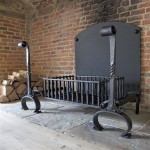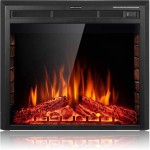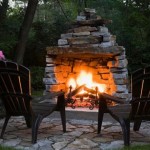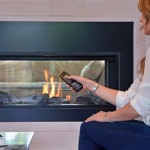Fireplace Gas Insert Reviews: A Comprehensive Guide
Fireplace gas inserts offer a convenient and efficient alternative to traditional wood-burning fireplaces. They provide the ambiance of a real fire without the hassle of wood storage, chopping, and cleanup. Choosing the right gas insert, however, can be a daunting task given the myriad of options available. This article will explore key factors to consider, along with reviews of various models based on performance, features, and overall value, to help potential buyers make an informed decision.
Gas fireplace inserts are self-contained units that fit directly into an existing fireplace opening. They operate on either natural gas or propane, offering the convenience of instant ignition and adjustable flame height. Unlike wood-burning fireplaces, gas inserts are significantly more efficient, converting a higher percentage of fuel into usable heat for the home. This increased efficiency translates into lower heating bills and reduced environmental impact.
The selection of a gas fireplace insert requires careful consideration of several factors, including the size of the fireplace opening, the heating needs of the space, the desired aesthetic, and the budget. Understanding these factors is crucial for selecting a gas insert that provides both functionality and visual appeal.
Key Considerations Before Purchasing a Gas Fireplace Insert
Before delving into specific model reviews, it is essential to outline the key considerations that should guide the selection process. These factors will help narrow down the options and ensure that the chosen insert meets the specific needs of the homeowner.
1. Size and Fit: The first step is to accurately measure the existing fireplace opening. Gas inserts are available in a range of sizes, and it is crucial to choose one that fits properly. A too-small insert will leave unsightly gaps, while a too-large insert will not fit at all. Manufacturers typically provide detailed sizing specifications, including width, height, and depth requirements. Measure the firebox opening at its narrowest points to ensure a proper fit. Consider the depth of the firebox as well. Some inserts require substantial depth and may not be suitable for shallow fireplaces.
2. Heating Capacity (BTUs): British Thermal Units (BTUs) measure the heating capacity of a gas insert. The BTU rating indicates the amount of heat the insert can generate per hour. Selecting the appropriate BTU rating is crucial for effectively heating the intended space. A general guideline is to multiply the square footage of the room by the local climate factor to determine the required BTU output. Consult with a professional to accurately assess the heating needs of the space. Over-sizing the insert can lead to uncomfortable temperatures, while under-sizing it will result in insufficient heating.
3. Fuel Type (Natural Gas or Propane): Gas inserts are designed to operate on either natural gas or propane. It is essential to determine which fuel source is available and choose an insert accordingly. Natural gas is typically less expensive than propane, but it is not available in all areas. Propane requires a separate tank and delivery service, adding to the overall cost. Some inserts can be converted from one fuel type to another, but this typically requires a conversion kit and professional installation. Selecting the correct fuel type is essential for safe and efficient operation.
4. Venting System: Gas inserts require a venting system to safely exhaust combustion byproducts. There are two primary types of venting systems: direct vent and B-vent. Direct vent systems draw air from outside the home for combustion and exhaust gases directly outside through a sealed pipe. This is the most common and efficient venting option. B-vent systems use existing chimneys to vent exhaust gases. However, B-vent systems are less efficient and may require chimney modifications to ensure proper venting. The choice of venting system will depend on the existing fireplace setup and local building codes. Consult with a qualified installer to determine the appropriate venting system for the specific situation.
5. Features and Controls: Gas inserts offer a variety of features and controls that enhance their convenience and functionality. These features include remote controls, adjustable flame height, thermostatic controls, and programmable timers. Remote controls allow for convenient operation from anywhere in the room. Adjustable flame height allows for customization of the flame appearance and heat output. Thermostatic controls maintain a consistent room temperature. Programmable timers allow for automated operation, such as turning the insert on and off at pre-set times. Consider which features are most important and choose an insert that offers the desired level of control.
6. Aesthetics and Style: Gas inserts are available in a wide range of styles and finishes to complement various décor preferences. Options include traditional log sets, contemporary glass media, and various decorative fronts. The aesthetic appeal of the insert is an important consideration, as it will be a focal point in the room. Consider the overall style of the room and choose an insert that enhances the existing décor. Some inserts offer customizable options, such as different log set configurations or decorative fronts, allowing for further personalization.
7. Budget: Gas fireplace inserts range in price from a few hundred dollars to several thousand dollars. It is essential to establish a budget before starting the selection process. In addition to the cost of the insert itself, factor in the cost of installation, venting materials, and any necessary modifications to the existing fireplace. Consider the long-term operating costs, such as fuel consumption and maintenance. A higher-priced insert may offer greater efficiency and durability, resulting in lower long-term costs. Balancing the initial cost with the long-term operating costs is crucial for making a cost-effective decision.
Gas Fireplace Insert Reviews: Popular Models and Performance
This section provides reviews of several popular gas fireplace insert models based on their performance, features, and overall value. The reviews are based on publicly available information, customer feedback, and industry expert opinions.
1. Majestic Ruby Series Gas Insert: The Majestic Ruby Series is a popular choice for homeowners seeking a balance of performance and affordability. These inserts are known for their realistic flame presentation and efficient heating capabilities. They typically feature a multi-sided log set, providing a more convincing appearance than traditional single-log designs. The Ruby series often includes a remote control with thermostatic control, allowing for precise temperature regulation. These inserts are generally easy to install and maintain, making them a good option for both novice and experienced homeowners. However, some users have noted that the blower can be somewhat noisy at higher settings.
2. Regency Hampton HI31 Gas Insert: The Regency Hampton HI31 is a high-end gas insert known for its exceptional quality and performance. It boasts a robust heating capacity and a sophisticated design. The Hampton HI31 features a ceramic glass front, providing a clear and unobstructed view of the flames. It also includes a variable-speed blower, allowing for customized airflow and heat distribution. Regency is known for its durable construction and reliable performance. While the Hampton HI31 is a more expensive option, its superior quality and long-lasting performance make it a worthwhile investment for homeowners seeking a premium gas insert.
3. Napoleon Ascent X 36 Gas Insert: The Napoleon Ascent X 36 is a versatile gas insert that offers a range of features and customization options. It is available in both natural gas and propane models and can be easily converted between the two fuel types. The Ascent X 36 features a clean-face design, providing a sleek and modern aesthetic. It also includes a remote control with thermostatic control and a programmable timer. Napoleon is known for its innovative designs and energy-efficient performance. The Ascent X 36 is a good choice for homeowners seeking a stylish and functional gas insert with a variety of customizable options.
4. Heat & Glo Supreme I30 Gas Insert: The Heat & Glo Supreme I30 is a mid-range gas insert that offers a good balance of features and price. It is known for its efficient heating capabilities and realistic flame presentation. The Supreme I30 features a multi-sided log set and a ceramic glass front. It also includes a remote control with thermostatic control and a variable-speed blower. Heat & Glo is a reputable brand known for its quality and reliability. The Supreme I30 is a good option for homeowners seeking a reliable and efficient gas insert at a reasonable price.
Installation and Maintenance of Gas Fireplace Inserts
Proper installation and regular maintenance are crucial for ensuring the safe and efficient operation of a gas fireplace insert. Installation should always be performed by a qualified professional with experience in gas appliance installation. Improper installation can lead to gas leaks, carbon monoxide poisoning, and other safety hazards.
1. Professional Installation: Engaging a qualified installer is paramount. The installer will ensure that the insert is properly connected to the gas line and venting system. They will also verify that the insert meets all local building codes and safety regulations. A professional installation will provide peace of mind and ensure that the insert operates safely and efficiently.
2. Regular Maintenance: Regular maintenance is essential for prolonging the life of the gas insert and ensuring its optimal performance. Maintenance tasks include cleaning the glass front, inspecting the venting system, and checking the burner for any obstructions. The frequency of maintenance will depend on the usage of the insert and the environmental conditions. Consult the manufacturer's instructions for specific maintenance recommendations.
3. Carbon Monoxide Detection: Installing a carbon monoxide detector near the gas fireplace insert is crucial for safety. Carbon monoxide is a colorless and odorless gas that can be deadly. A carbon monoxide detector will alert occupants to the presence of the gas, allowing them to evacuate the premises and avoid potentially fatal exposure. Regularly test the carbon monoxide detector to ensure that it is functioning properly.
Selecting a gas fireplace insert requires careful consideration of various factors, including size, heating capacity, fuel type, venting system, features, aesthetics, and budget. By understanding these factors and reviewing the available models, homeowners can make an informed decision and choose an insert that meets their specific needs and preferences. Proper installation and regular maintenance are essential for ensuring the safe and efficient operation of the gas fireplace insert for years to come.
.aspx?strip=all)
Top 11 Gas Fireplace Insert Trends Of 2024

Chaska 34 Gas Fireplace Insert Kozy Heat

Kingsman Clean View Gas Fireplace Insert Review Fireplaces Direct Learning Center

Best Gas Fireplace Insert Top 5 For Existing Fireplaces

Majestic 30 Inch Ruby Direct Vent Gas Fireplace Insert With Blower

Why Choose A Gas Insert Hearth Manor Fireplace Design

Enviro E30 Gas Fireplace Insert Safe Home

Procom 26 000 Btu Vent Free Dual Fuel Propane And Natural Gas Indoor Fireplace Insert With T Stat Control 170082 The Home Depot

Enviro S Gas E30 Insert

Enviro The E30 Gas Fireplace Insert Toronto Home Comfort
Related Posts








